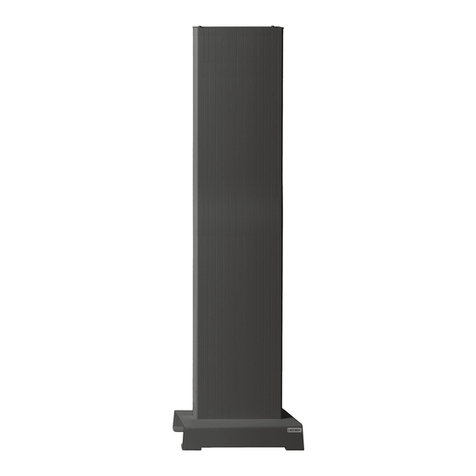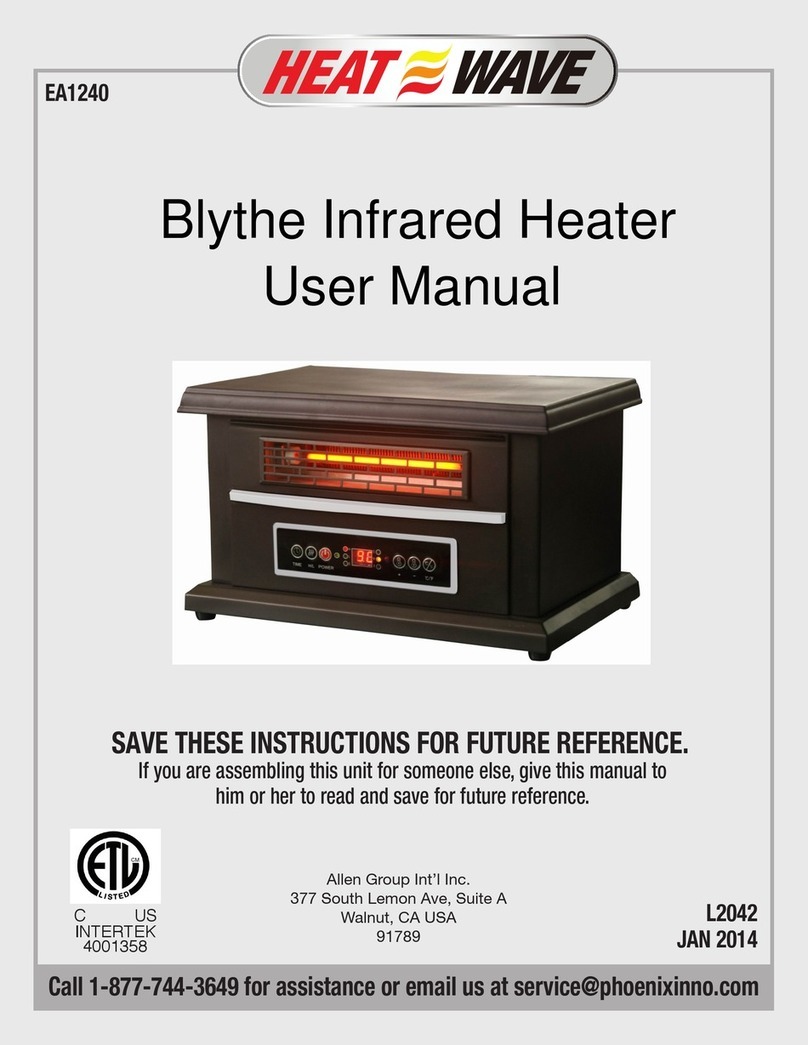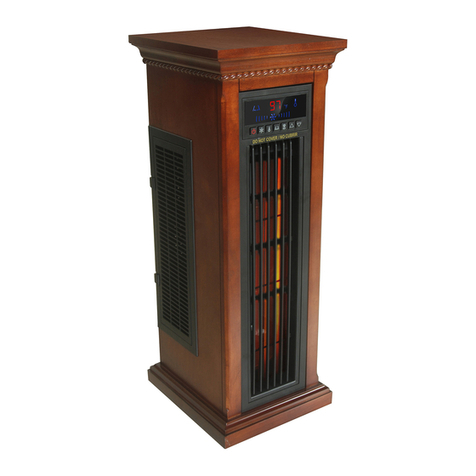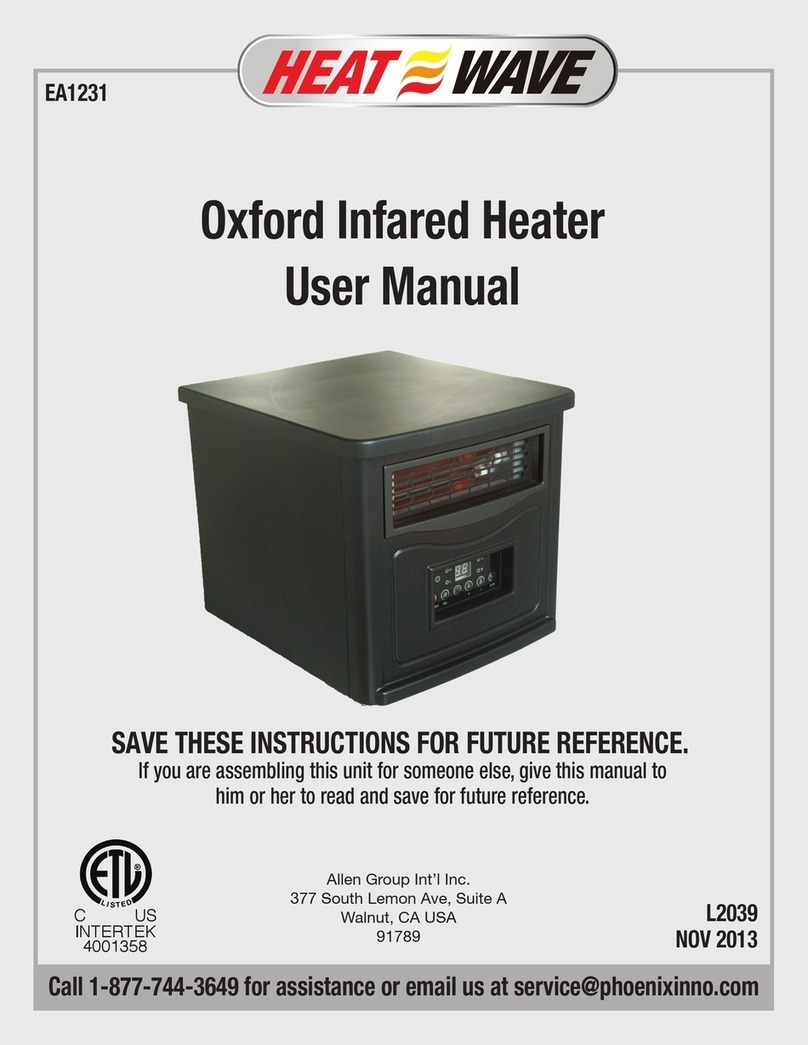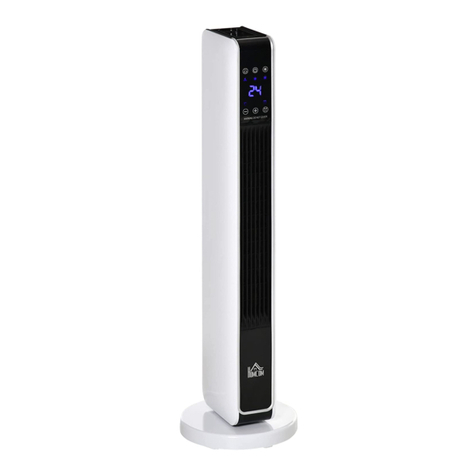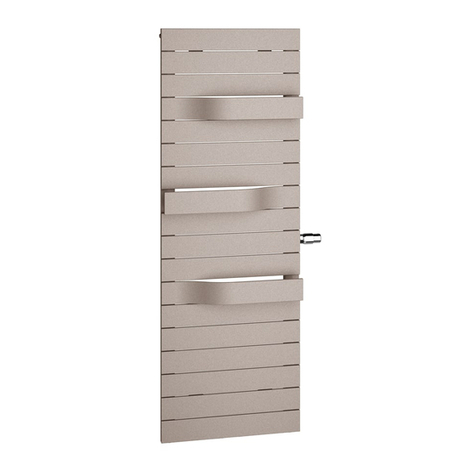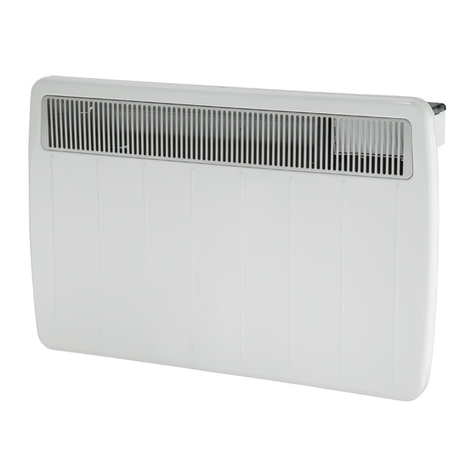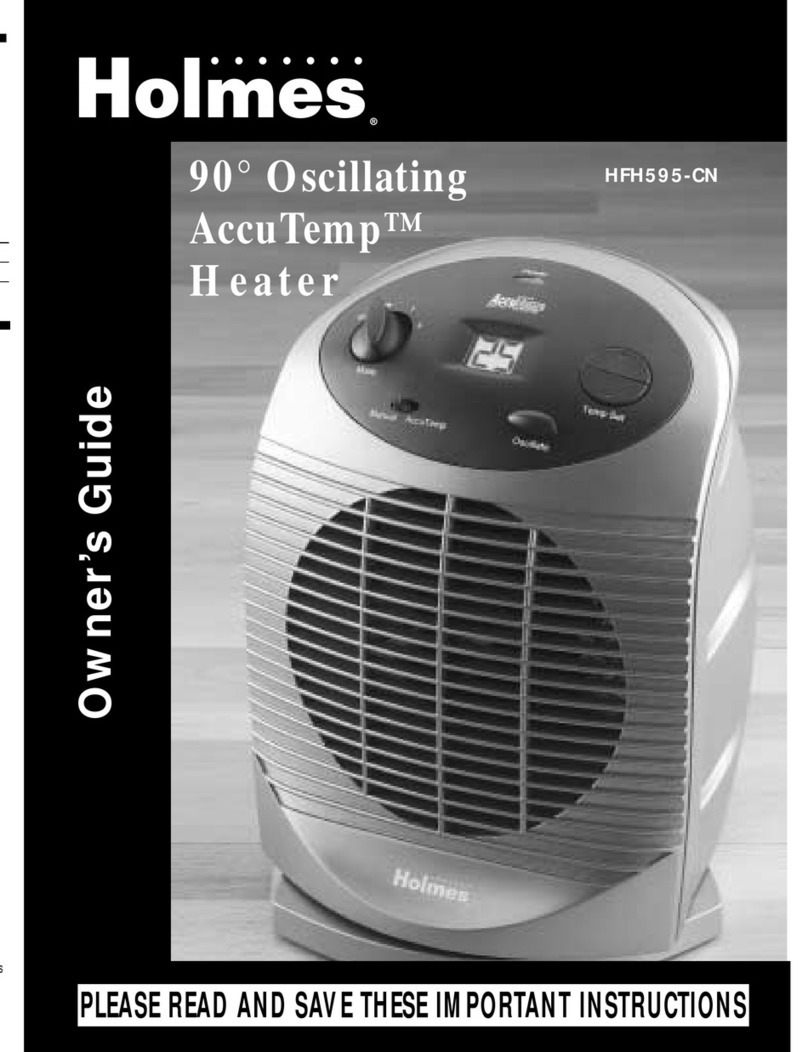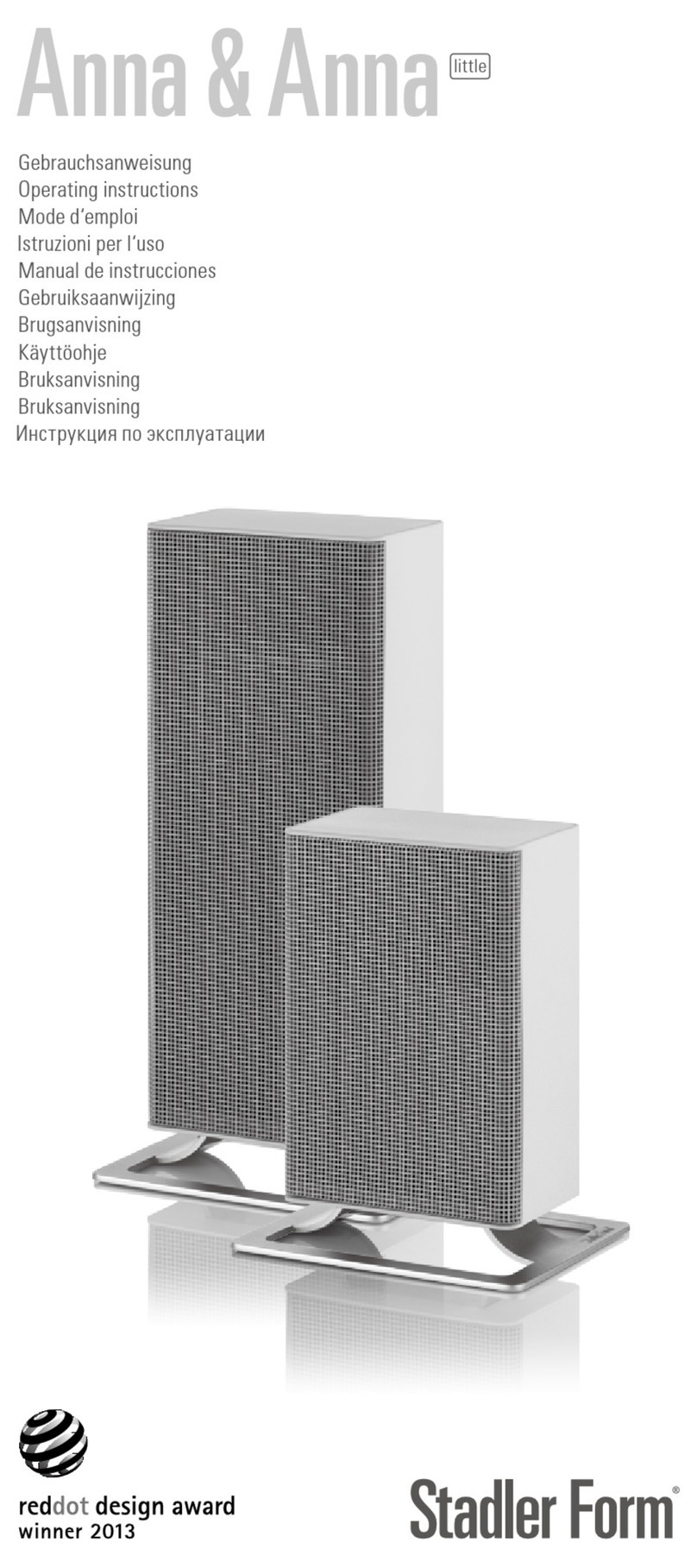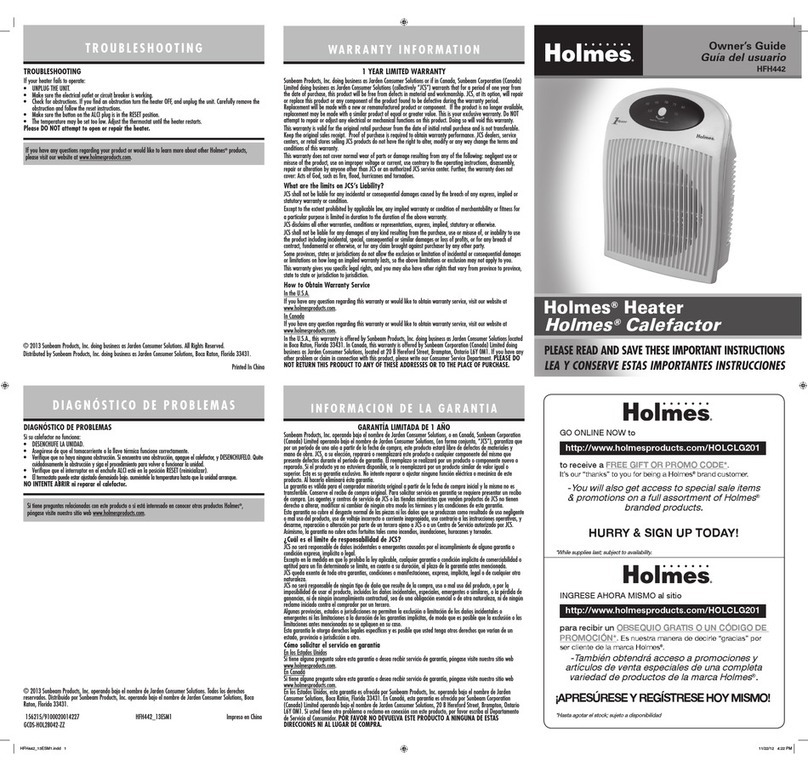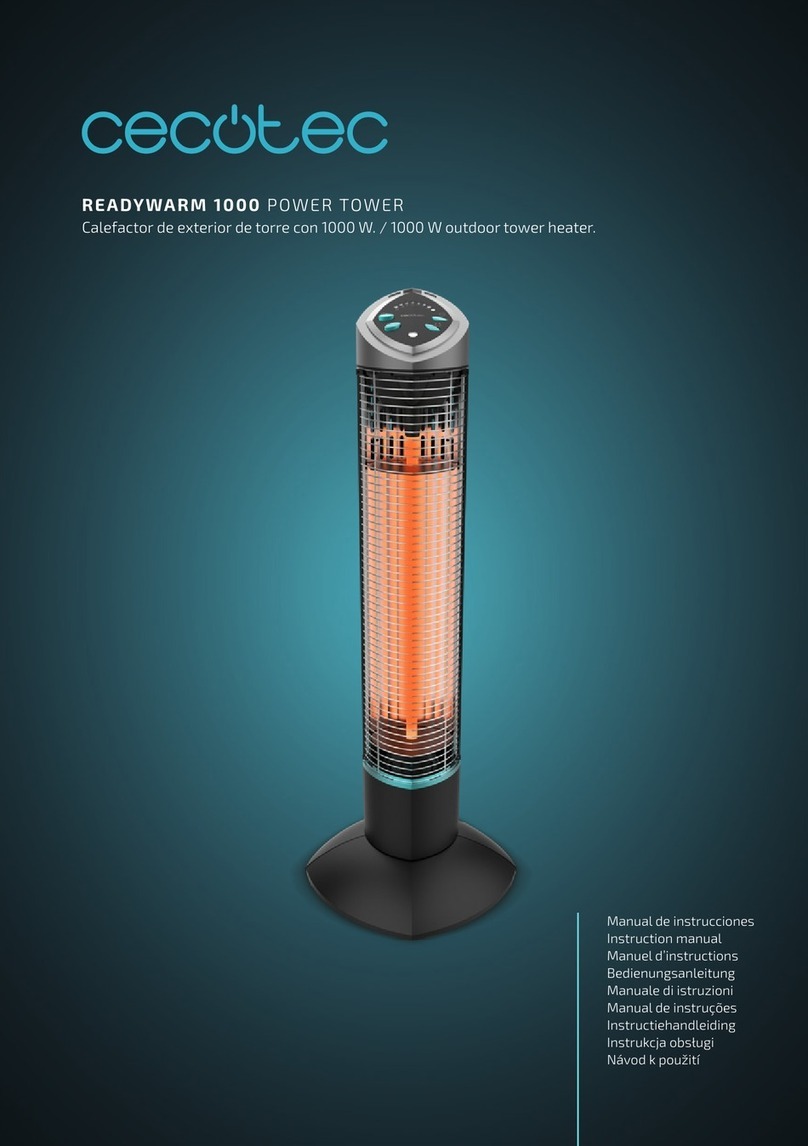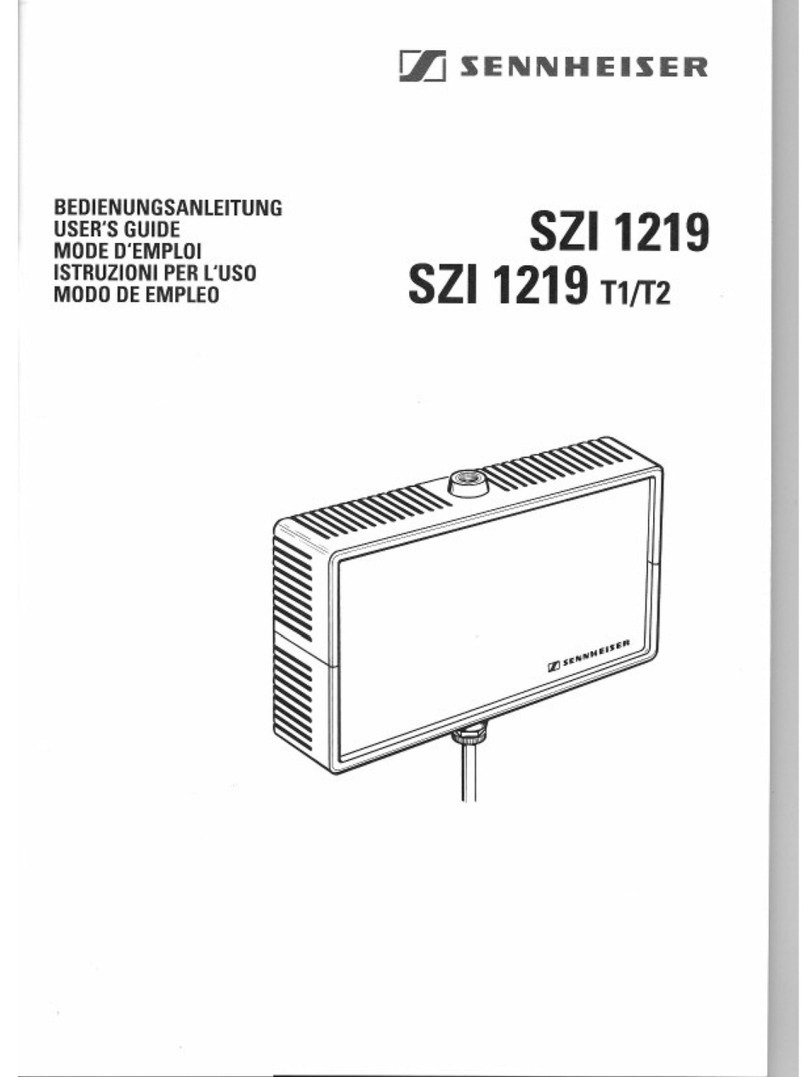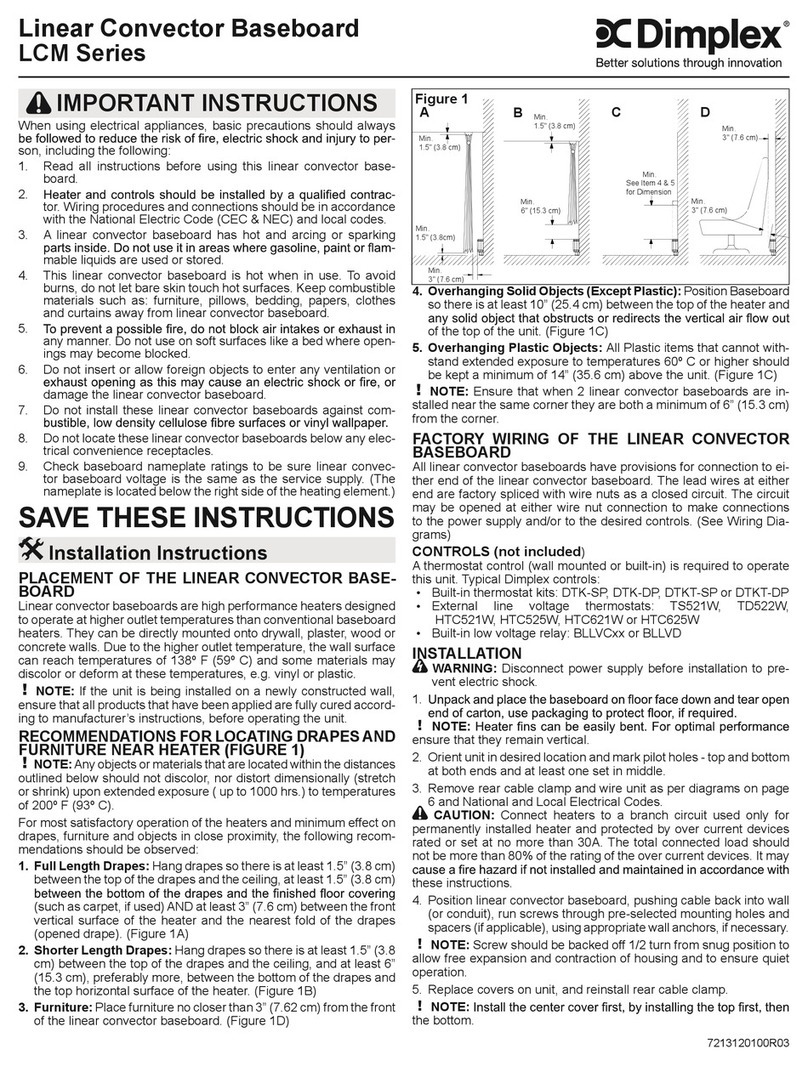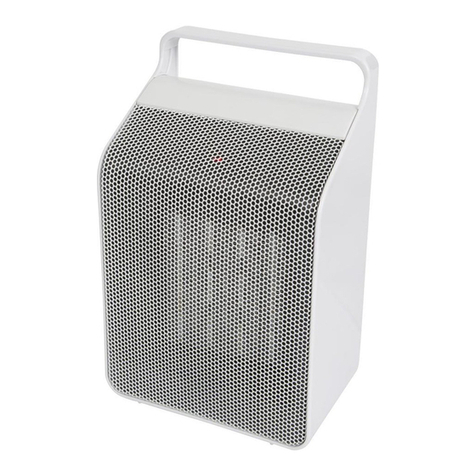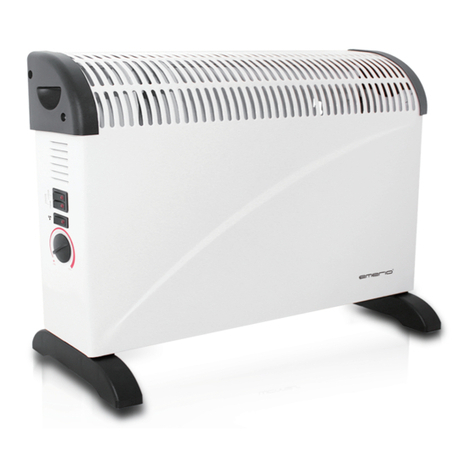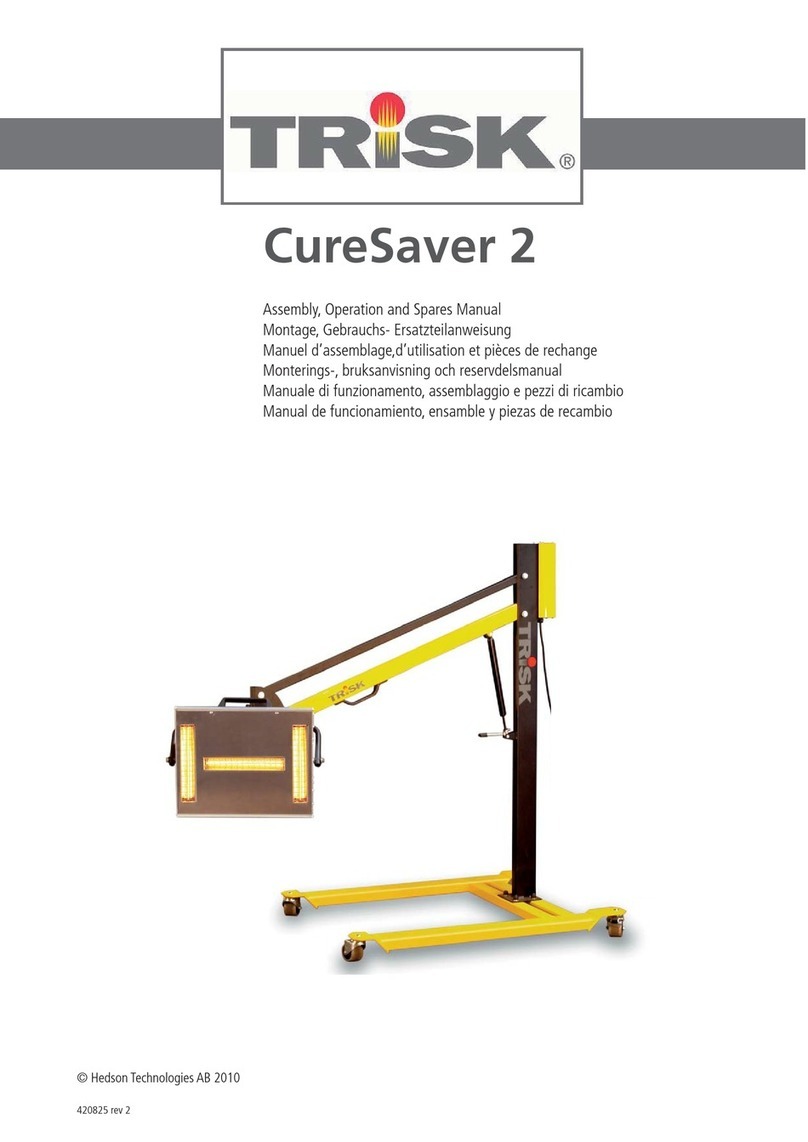Heat Wave HW150 User manual

WARM IT UP WITH AFREE SOURCE OF HEAT!
Siebring Manufacturing, Inc.
303 S. Main St. PO Box 658
George, IA. 51237
Ph. 712-475-3317
Fax 712-475-3490
www.siebringmfg.com

1
TABLE OF CONTENTS
IMPORTANT NOTES –PLEASE READ
1
Warranty Policy and Conditions that Void the Warranty
1
Preface
1
TABLE OF CONTENTS
1-5
1.00
WARNINGS & WARRANTY
6-9
Letter from Kagi Heating & Supply
10
2.00
GENERAL OPERATION: How a HEATWAVE Furnace Works
11
3.00
OVERVIEW: Furnace Controls and Operation
12
3.01
Thermostat
13
3.02
Oil Primary Control
13
3.03
Fan Control
14
3.04
Hi-Limit Control
14
3.05
Barometric Draft Control
14
3.06
Atomizing Air Regulator
15
3.07
Oil Preheater
15
3.08
Oil Preheater Thermostat
15
3.09
Air and Oil Solenoid Valve
16
3.10
Cad Cell
16
3.11
Oil Regulator
17
3.12
Air Pressure Switch
17
3.13
Combustion Air, Blast Tube, Air Turret Band Adjuster
17
3.14
Igniter Electrodes
17
3.15
Nozzle
18
3.16
Neon Indicating Lamps
18
3.17
Preheater On / Off Switch
18
3.18
Soft Start Tank (Standard on all KAGI Burners)
19
4.00
INSTALLATION
19
4.01
Consideration for Proper Installation
19
4.02
Required Reference Materials
19
4.03
Introduction
20
4.04
Site Selection Requirements
20
4.05
Installation of Furnace on a Combustible Floor
21
4.06
Installation: Ceiling Requirements
21
4.07
Installing Heater Too High
21
4.08
Ventilation and Combustion Air Requirements
21
4.09
Ventilation and Combustion Air Groupings
21
4.10
Location of Furnace Considering Ventilation & Combustion Air
21
4.11
Air Circulation / Heat Distribution
22
4.12
Minimum Clearances from Combustible
23
4.13
Blower Installation
23

2
4.14
Burner Installation
23
4.15
Chimney Requirements
24
4.16
Ceramic or Masonry Chimney
25
4.17
Chimney Connector
26
4.18
Chimney Clearance Outdoors
27
4.19
Special Chimney Caps for Down Drafts
27
4.20
Barometric Damper / Barometric Draft Control
27
4.21
Oil Tank Installation / Pump / Piping Section
28
4.22
Furnace and Storage Tank Clearance
28
4.23
Tank Size Selection
28
4.24
Oil Tank Temperatures
29
4.25
Underground Tanks (Use Of)
29
4.26
Vent Pipe for the Storage Tank
29
4.27
Fill Pipe
30
4.28
Tank Venting / Filling Gauge
30
4.29
Tank Agitator (For Mixing Different Viscosity Oils)
30
4.30
Floating Pick-Up Oil Sump (For Dirty Underground Tanks)
30
4.31
Pump Installation and General Pump Information
31
4.32
Optimum Pump Location
32
4.33
Fuel Filter and Location
32
4.34
Piping and Fuel Lines
33
4.35
Pipe Diameter
34
4.36
Pipe Material
34
4.37
Compressed Air Supply
34
4.38
Compressed Air Piping
35
4.39
No Compressed Air Available
36
4.40
Electrical Supply
36
4.41
Electrical Conduit
37
4.42
Electrical Supply: Pump
37
4.43
Pump Connections Form Wiring Schematic
37
4.44
Electrical Wall Thermostat
37
4.45
Ducted Installation
37
4.46
Ducting Pressure and Changes
38
4.47
Louvers (Non Ducted Installations)
38
4.48
Comment on Installation Diagram
38
4.49
Comment on Installation Wiring Diagram
39
4.50
Summary: Installation Instructions
39
5.00
START-UP PROCEDURE
40
5.01
Pump Priming and Additional Start-Up Information
41
5.02
Furnace Smells When First Fired Up
44
6.00
FURNACE ADJUSTMENT AND GENERAL OPERATION
GUIDLINE
44
6.01
Furnace Controls Requiring Adjustment
44

3
6.02
Adjusting the Secondary Air Without a Smoke Spot Tester
45
6.02a
Adjusting the Flame Using the Cad Cell on Furnaces Where There is
No Flame Observation Port
45
6.03
Adjusting the Oil Pressure Regulator
45
6.04
Fan Speed
46
6.05
Draft Readings
46
6.06
Power Draft Boosters
47
6.07
Venting all Combustion Air from Outdoors to Overcome Negative
Building Pressures
47
6.08
Viewing the Flame from Observation Port
47
6.09
Optimum Flame Length
48
6.10
Flame Length Will Increase On Its Own
48
6.11
Optimum Flame Color
49
6.12
Dark Red / Orange Flame
49
6.13
Over Firing Your Furnace
49
6.14
Adjustable Flow Rate
49
6.15
Filter Waste Oil
49
6.16
Filter Waste Oil Through a Magnet
50
6.17
Adding Thin Fuels to Waste Oil Supply
50
6.18
Burning Rear End Grease
50
6.19
Burning Synthetic, Cooking, and Other Oils
50
7.00
CHECKS AND MAINTENANCE
51
7.01
Maintenance and Service
51
7.02
Stack Temperature for Determining When Dust Clean-out is Needed
51
7.03
Protective Clothing
52
7.04
Dust Removal From 2nd Clean-out door (CAUTION)
52
7.05
Maintenance Schedule
53
7.06
Seasonal Cleaning
54
7.07
Burner Cleaning
57
7.08
Cleaning Strainer in Waste Oil Transfer Pump
58
7.09
Cleaning the Suction Strainer in the Storage Tank
58
7.10
Cleaning the Oil Filters
59
7.11
Cleaning the Nozzle
59
7.12
DELETED
7.13
Cleaning Lines, Solenoids, and Preheater Block
60
7.14
Cleaning the Cad Cell
61
7.15
Checking the Cad Cell
61
7.16
Oil Primary Relay Test
62
7.17
Cad Cell Sensor Test
62
7.18
Checking the Blower Pulley
63
7.19
Blower Belt Tension
63
7.20
Removal of Accumulated Excess Oil
63
7.21
Checking the Oil Primary Control
64
7.22
Bleeding the Pump
64
7.23
Checking the Oil Pump Properly
65

4
7.24
Checking Regulators
66
7.25
Checking Transformer
66
7.26
Checking for Water in Nozzle Discharge Spray
67
7.27
Checking for Water in Oil Supply
67
7.28
Checking for Water in Air Supply
68
7.29
Checking Neon Indicator Lights
68
7.30
Jumping Switches to Check Components
68
8.00
TROUBLE SHOOTING
69
8.01
Seven Common Reasons Why Burner Will Not Ignite
69
8.02
Flooded Furnace
70
8.03
Burner Trouble Shooting
71
8.04
Furnace Fails to Start
72
8.05
Furnace Starts, Burns a Short Time, Then Shuts Down
73
8.06
Furnace Burns With Smoky Flame
74
8.07
Furnace Burns With Long Narrow Flame
74
8.08
Furnace Burns, Flame Has Sparks and “Fireflies”
75
8.09
Flame Impingement
75
8.10
Furnace Burns With Short Flame
76
8.11
Flame Pulsates
76
8.12
Flame Pulsates Now and Then, Especially When It’s Windy and
Sometimes Goes Out
76
8.13
Furnace Burns, But Puts Out Low Heat
77
8.14
Flame is Too Short and Gets Shorter When Increasing the Air
Pressure, and Then Goes Out
78
8.15
Flame is Hard to Adjust, a Little Turn and It Is Too Much, A Touch
Backwards and It’s Too Small
78
8.16
Flame Will Continue When the Inspection Door Is Opened, But
Goes Out When It Is Closed
78
8.17
Furnace Burns Too Hot
78
8.18
Furnace Does Not Shut Off
79
8.19
Furnace Runs Well, Then Burner Stops and Blower Blows Cold Air
79
8.20
Furnace Burns, But Rumbles
79
8.21
Furnace Operates, But Smells
80
8.22
Furnace Drips Oil
80
8.23
Furnace Set At Night Is Off By Morning
80
8.24
Furnace Has Excessive Ash Buildup
81
8.25
Furnace Has Black Clinkers In Chamber
82
8.26
Furnace Chamber Flaking Metal
82
8.27
Flame Is Not Burning in the Center of the Baffle Target (See 8.27)
82
8.28
Furnace Baffle Has Burnout Hole or is Loose and Not in the Right
Position
82
8.29
Oil Primary Control Trouble Shooting
83
8.30
Oil or Air Solenoids Chatter
83
8.31
Oil Regulator is Noisy
83
8.32
Pump Does Not Work When Burner Comes On
84

5
8.33
Pump Works, But Runs Hot
84
8.34
Pump Works, But Is Noisy
85
8.35
Pump By-Pass Pressure Too High
85
8.36
Pump Turns, But No Pressure
85
8.37
Pump Has Too High Vacuum Or No Vacuum
86
8.38
Pump Was Working Till the Oil Filters / Screen in the Pump Was
Cleaned
86
8.39
No Spark At Electrodes
87
8.40
No Oil Discharge At Nozzles
87
8.41
Deleted
8.42
No Oil Spray From Nozzle: Due to a Malfunctioning Air Pressure
Switch
87
8.43
Burner Has Spark and Oil Spray, Will Not Ignite
88
8.44
Blower Runs Continuously
88
8.45
Furnace Fan Cycles Too Often, Room Is Cold
89
8.46
Continuous Air Flow Out of Nozzle
89
8.47
Continuous Oil Flow Out of Nozzle
90
8.48
Faulty Wall Thermostat
90
8.49
Green Light Comes On and Then Goes Out, After Waiting, Comes
Back On
90
8.50
Oil Pressure Gauge on the Burner Starts to Climb When the Burner
Shuts Off and Gets So High It Ruins the Gauge
91
9.00
MISCELLANEOUS
92
9.01
Furnace Shut Down for Extended Periods
92
9.02
Operating Furnace On Warm Day To Rid Waste Oil
92
SUNTEC FACTORY PUMP INFORMATION
DELTA FACTORY SERVICE / MAINTENANCE
CAUTION DECALS AND NOTES
MAINTENANCE SCHEDULE AND DECALS
BURNER PARTS LIST (In rear of book, illustrated drawings)
10.0 Index of Drawings 93
Note: Letter drawings A-F, F(ICM), F-1 & F-2 (figures 33-41) apply to the Kagi
S-250 & S-500 burners and are broken down by component to make viewing &
wiring easier and less confusing.

6
IMPORTANT NOTES: PLEASE READ
When the furnace is delivered to you, BE SURE THAT THE FURNACE CABINET
AND OTHER BOXES THAT ACCOMPANY IT ARE OPENED AND CHECKED
FOR FREIGHT DAMAGES BEFORE THE DRIVER LEAVES as it is easier to file a
claim if the driver signs the bill of lading and acknowledges that the furnace is damaged.
If there is no time to inspect the shipment, observe outside carton damages and make note
of this on the delivery bill of lading. If you do not, you may NOT get full compensation
on damages as some freight companies will pay you on “hidden damages” which may be
only a partial payment on your loss. Siebring Manufacturing, Inc. carefully inspects and
packages furnaces for shipment, and has NOT sent you a damaged one.
Open the boxes and remove the contents and check that you have one of each of the
following items:
A. OWNERS MANUAL
B. SQUIRREL CAGE CIRCULATION BLOWER
C. ELECTRIC MOTOR FOR (B)
D. FAN BELT FOR (B)
E. SMALL PARTS PACKAGE FOR (B), (B, C AND E MAYBE
PREASSEMBLED)
F. ALUMINUM WASHABLE FILTER & FITTINGS
G. CHECK VALVE
H. SUCTION STRAINER
I. WASTE OIL TRANSFER PUMP
J. WALL THERMOSTAT
K. 8 INCH BAROMETRIC DAMPER
IMMEDIATELY NOTIFY YOUR HEATWAVE DEALER OR SIEBRING
MANUFACTURING OF ANY SHORTAGES
Siebring Manufacturing, Inc. and our insurance carrier need to know the location of all
units sold to assist in handling warranty claims and to disseminate important service
bulletins directly to owners.
WARRANTY POLICY
MULTI-OIL FUELED HEATER (LIMITED WARRANTY)

7
If you are in need of service support and your local dealer or Heatwave representative is
not available or cannot help you, contact the Kagi Customer Service Department (888-
866-5244) during normal business hours (Pacific Time). Read and check your Heatwave
Owner’s Manual under “Trouble Shooting” first as your problem may be very simple to
solve. As an owner, you can perform a number of checks and maintenance procedures
with the assistance of you manual. Before a part is considered defective, a Kagi service
technician can help you determine if it just needs cleaning and/or adjustment.
HEATWAVE Warrants to the purchaser of this Multi-Oil Fueled Heater Unit that it will
repair or replace any part which in normal use proves to be defective in material or
workmanship within a period of ONE (1) YEAR from the date of purchase, provided
same is returned for factory inspection and warranty determination. The combustion
chamber (Limited Warranty) is warranted for a period of TEN (10) YEARS at a pro-rated
schedule, provided the heater is properly installed and maintained.
HEATWAVE does not warrant the paint finish as this is subject to abrasion, scratching,
and discoloration during installation and operation. The warranty does NOT cover any
labor charges involved with parts replacement or service unless preauthorized by
Siebring Mfg., Inc. in writing.
NOTICE: The Heatwave Multi-Oil Fueled Burners, Model HW150, HW250, and
HW350 are tested, designed, and listed to burn the following:
A. USED CRANKCASE OILS UP TO 50 SAE WEIGHT
B. #2 FURNACE FUEL OILS
C. USED AUTOMATIC TRANSMISSION FLUID
WARNING: CONDITIONS THAT WILL VOID THE WARRANTY
A. Using in the heater or adding to the storage tank substances, including, but not
limited to the following: paint, thinner, gasoline, other volatile liquids, or
solvents, transformer oils, or gear lubes. Some of these substances have a high
chloride content which can oxidize HEATWAVE stainless steel targets and
chambers. It is illegal to mix any of these substances with waste oil and doing so
can cause a hazardous condition.
B. Tampering with the internal components of the safety switches, air/oil, aluminum
preheater, or any parts in general.
C. Not installing the heater properly as per instruction in this manual and/or
according to local and state codes.
D. Not maintaining the heater according to instructions in this manual.
E. Abusing or altering any part.
F. Using parts other than those supplied by Siebring Mfg., Inc. to operate this heater.
G. Over-firing the heater.
NOTE: Siebring Mfg., Inc. and our insurance carrier need to know the location of all
heaters sold in order to distribute service bulletins directly to the owner.

8
For warranty service, simply contact the dealer from whom the heater was purchased. If
the unit was purchased directly from Siebring Mfg., Inc., notify Siebring Mfg., Inc. in
writing of any defects. No parts will be accepted for warranty inspection unless Siebring
Mfg., Inc. has issued an RGA (Returned Goods Authorization) number. Before this
number is given, the part or parts will have been determined by phone to be defective and
the model, serial number, replacement part number, purchase date, and nature of defect
will be recorded.
This warranty gives you specific legal rights and you may have other rights which may
vary from state to state.
PREFACE
All installations must be made in accordance with state and local codes, which vary from
state to state, and may differ from this manual.
Heater must be installed and / or inspected by a licensed heating contractor before
operation.
IMPORTANT NOTES AND CAUTIONS:
RULES AND REGULATIONS PROMULGATED BY STATE AND LOCAL
AUTHORITIES TAKE PRECEDENCE OVER THE GENERAL INSTRUCTION
PROVIDED IN THIS MANUAL.
THE INSTALLATION OF THE EQUIPMENT SHALL BE IN ACCORDANCE WITH
NFPA (NATIONAL FIRE PROTECTION AGENCY) REGULATIONS OF
AUTHORITIES HAVING JURISDICTION OVER ENVIRONMENTAL MATTERS,
AND FUEL, FIRE, AND ELECTRICAL SAFETY.
Installation, operation, and maintenance permits from each of the above authorities
may be required, as well as municipal permits.
The three Heatwave furnaces Models HW150, HW250, and HW350 are listed with ETL
Laboratories, which have tested the U.L. Standards for waste oil burning furnaces.
Models HW150, HW250, and HW350 are listed to use #2 furnace fuels, automatic
transmission oils, and used crankcase oils up to 50 SAE.
CAUTION: NOT FOR RESIDENTIAL USE!
CAUTION: DO NOT BURN GASOLIN OR ADD GASOLING TO THE FUEL
SUPPLY!
CAUTION: DO NOT TRY TO BURN CLEANING FLUIDS, PAINT THINNERS,
OR OIL ADDITIVES IN THIS APPLIANCE!

9
CAUTION: DO NOT PUSH THE RESET BUTTON ON A FLAMEOUT IF THE
FURNACE IS HOT TO THE TOUCH AND FILLED WITH OIL
VAPORS OR FUMES!
CAUTION: DO NOT STORE OR USE GASOLINE OR OTHER FLAMMABLE
LIQUIDS NEAR THIS FURNACE!
CAUTION: KEEP THE FUEL VALVE NEAREST THE SUPPLY TANK SHUT
OFF WHEN THE BURNER IS SHUT DOWN FOR EXTENDED
PERIODS!
CAUTION: DO NOT INSTALL THE FURNACE OR BURNER ON OR NEAR
COMBUSTABLE MATERIALS! (See instructions for minimum
distances.)
CAUTION: IF YOU TURN OFF THE POWER TO THE BURNER, FOR ADDED
SAFETY, TURN TO “OFF” OR OPEN THE CIRCUIT TO THE
WALL THERMOSTAT.
CAUTION: DO NOT TAMPER WITH THE CONTROLS; CALL YOUR
TECHNICIAN!
CAUTION: THE EXHAUST STACK MUST BE CLEANED ANNUALLY!
CAUTION: WASTE OILS CAN CONTAIN POISONOUS HEAVY METALS
AND OTHER FOREIGN MATERIALS. WHEN BURNED, THESE
COMPOUNDS ARE DEPOSITED WITHIN OR EMITTED FROM
THIS HEATING APPLIANCE AND THEREFORE CARE SHOULD
BE TAKEN WHEN USING, CLEANING, AND MAINTAINING
THIS EQUIPMENT!
CAUTION: WHENEVER ANY CLEANING, INCLUDING THAT OF THE FLUE
AND EXHAUST STACK IS DONE, PROTECTIVE CLOTHING,
INCLUDING GLOVES AND A FACE MASK OR RESPIRATOR,
MUST BE WORN!

10
.From Kagi Heating & Supplies:
THANK YOU for selecting a HEATWAVE MULTI-FUELED FURNACE. Your
furnace may come to you unassembled to reduce shipping damage. This furnace will be
simple to assemble –just follow the instructions in this manual. It will be operational in
a short time. NOTE: The Heatwave furnace maybe shipped to you already assembled.
Proper installation is extremely important for safe, reliable operation of the Heatwave
furnace. Simple maintenance on the furnace must be performed periodically or the
furnace will not start properly and components of the furnace will fail, leading to
premature replacement of parts. MOST COMPLAINTS about waste oil furnaces,
regardless of the manufacturer, are due to improper installation and maintenance.
HEATWAVE furnaces all have standard UL-listed safety devices that are used in
residential oil furnaces and all models Siebring Mfg., Inc. manufactures are engineered to
operate on a negative draft. Should the chamber leak, all obnoxious gases will be vented
up the chimney, not into the room. An UL-listed electric eye monitors flame, and should
a flameout occur the burner will shut down immediately. Should the circulation blower
fail, a hi-limit switch set at 200° F. will immediately shut off the burner which will not
start again on its own, but must be reset.
I have installed, investigated, and field-checked hundreds of waste oil furnaces and I urge
reading this manual very carefully before installing and operating your HEATWAVE
furnace. Your reward will be a furnace that eliminates your waste oil problems, and
saves you up to hundreds of dollars each month during the heating season.
Tom Kagi Sr.
Sales / Engineer

11
2.00 HOW A HEATWAVE FURNACE WORKS:
When the HEATWAVE furnace is energized from an electrical service panel, the current
goes directly to the High-Limit micro switch in the High-Limit fan switch. This is a
normally closed switch, and from there it goes to the burner. Inside the burner is an
aluminum heat sink block, which begins to heat. This aluminum heat sink houses two
electrical heating elements. The larger wattage heater (250 watts) is always on and
preheats the air for atomization and helps heat the waste oil contained in this aluminum
block. The lower wattage heater (50 –100 watts) is the oil pre-heater and is installed in
the oil passage within the aluminum block. This heater is energized only when the burner
is operating and heats the oil prior to entering the nozzle. This aluminum block is kept at
approximately 160° F. by a thermostat contacting the aluminum block.
There is normally open snap thermo-disc, which closes on temperature rise. When this
thermo sensor closes, it energizes a green neon indicator light on the burner which signals
the burner has preheated the oil to ignition temperature, and the burner is ready to fire.
When the wall thermostat is turned up above ambient temperature, and the points in the
thermostat are closed, calling for heat, a jump connection is created between the two TT
terminals on the oil primary control and the primary control load wire is activated
sending power to all of the burner components. The combustion blower now comes on,
air pressure is sensed on the air pressure switch sends power to the fuel pump. The air
and oil solenoid valve is normally closed and when it receives current, it opens; allowing
air to be pushed out from the nozzle with compressed air and through venture action, oil
is allowed to flow and sprayed into the firing chamber.
A 14,000-volt transformer is energized, always sparking while the burner is on,
producing a hot, constant, electrical spark. The combustion air in the blast tube blows
into this blue spark, lengthening it, and moves this arc into the oil spray igniting it.
The waste oil is sucked out, from the aluminum block by a special nozzle using
compressed shop air or an optional remote air compressor. This nozzle has a large
discharge orifice to allow large colloidal matter suspended in waste oil to pass through.
Inside this special nozzle is an oil distributor which spins the oil and air out into
microscopic droplets to allow a complete burn. When the oil primary control is
energized, a normally closed oil solenoid is energized open, and oil flows into the block
from a remote gear-driven pump. The pump receives current from an air pressure switch,
which closes at approximately at 9 PSI, which delivers oil from the oil storage tank
through a 100-micron filter directly to the burner. This pump is always working when
the burner is firing and stops when the burner cycles off. The smaller wattage element

12
heater in the aluminum heat sink block is connected to the oil primary circuit and when
energized, starts to heat the oil. This oil heater turns on and off when the burner is
cycling. This unique feature is the reason KAGI burners are so reliable. Others on the
market keep a constant high temperature on the oil, and when these heaters are left on for
extended periods of time, the oil will carbon and coke up in the pre-heater.
The KAGI burner has a variable oil regulator, which allows a variety of different-
viscosity oils to be burnt hence the variable BTU output. It can burn from ONE HALF of
a gallon to FOUR gallons per hour, depending on the size of the nozzle used and the
adjustment set on the burner.
When ignition is established, important adjustments to the blast tube air (combustion air)
oil pressure, oil flow, and air for atomization must be made for a clean burn.
When the proper adjustments are made, the oil burns with a clean, extremely hot,
yellowish-orange flame. The retention-head theory is utilized in the KAGI burner by
spinning the heavier droplets of waste oil together, making a complete burn. When the
burner is operating for a while and the cabinet air reaches a preset temperature, a fan
switch automatically turns the circulation blower on, forcing heated air into the room. A
UL-listed cadmium sulfide cell, or “electric eye”, monitors the flame and should a flame-
out occur, this safety switch turns the burner off immediately.
Should circulation blower fail, an UL-listed safety cabinet switch will automatically turn
off the burner when it reaches 200° F.
The heated air from the burner passes to the end of the combustion chamber, and is
directed to the opposite end of the chamber, making a total of three passes before it exits
out the chimney stack. This reduces the stack temperature, and makes your
HEATWAVE furnace one of the most thermo-efficient furnaces on the market.
3.00 OVERVIEW: FURNACE CONTROLS AND OPERATION
The following is a list of furnace controls:
1. THERMOSTAT
2. OIL PRIMARY CONTROL
3. FAN CONTROL
4. HI-LIMIT CONTROL
5. BAROMETRIC DRAFT CONTROL
6. AIR REGULATOR
7. OIL PREHEATER
8. PREHEATER THERMOSTAT
9. OIL SOLENOID
10. AIR SOLENOID
11. CAD CELL
12. OIL REGULATOR

13
13. AIR PRESSURE SWITCH
14. PREHEATER THERMOSTAT (snap disc)
15. PREHEATER ON/OFF SWITCH
16. AIR TURRET BAND ADJUSTER
17. IGNITOR ELECTRODES
18. NOZZLE
3.01 THERMOSTAT
The wall thermostat controls the operation of the automatic furnace to keep room
temperature within a desired range. The thermostat should be located approximately five
feet above the floor, in a central location with good natural air circulation. Avoid placing
the thermostat near opening doors or other sources of draft (including duct flow). The
thermostat will not operate properly unless it is mounted level.
The thermostat has a heat anticipator that artificially supplies heat to the sensing element
while the burner is operating. The anticipator prevents the room temperature from
exceeding the desired setting.
Follow the manufacturer’s instructions for installation and adjustment. An anticipator
setting of 0.2 should be used for the Carlin 48245S primary. The wall thermostat should
not be installed where it may be affected by drafts or flow from air ducts.
3.02 OIL PRIMARY CONTROL
The oil primary control is the gray or black rectangular box sitting on the top right side of
the burner. It has a red reset button on the top of the control (see figure 11).
When the wall thermostat is set for a temperature above the ambient temperature of the
room, the oil primary control starts the burner by switching on various components. A
cadmium sulfide cell, “electric eye” monitors the light level in the combustion chamber
to ensure there is fire. After 45 seconds, if there is no fire, the primary control shuts the
burner down. The burner will not restart unless the control is reset. Should the fire go
out at any time during operation, the oil primary control will automatically stop the
burner.
If fuel is not being ignited, this control precludes the burner from operating thereby,
preventing fuel from being sprayed into the combustion chamber.
CAUTION!! If a jumper wire is placed across the FF terminals on the oil primary
control, once the oil burner is started, the oil burner will continue to run, with or without
flame ignition. The cad cell switch is normally open, which means at room temperature
and without outside influence, it has no current continuity. The cad cell functions as a
jumper wire across the FF terminals. If the burner does not function without the jump
cable, stop and determine what the problem is. (See index of drawings for illustration).

14
CAUTION!! OPERATING THE BURNER WITH THE JUMPER WIRES ATTACHED TO
THE FF TERMINALS IS NOT RECOMMENDED AS THIS RESULTS IN BY-PASSING
THE OIL PRIMARY CONTROL, AN IMPORTANT SAFETY DEVICE THAT IS
DESIGNED FOR YOUR PROTECTION!
NOTE: The burner must be started first before the jump cable is attached, as attaching
the jump cable first will make the burner unable to start!
CAUTION!! DO NOT PRESS THE RESET BUTTON IF THE FURNACE IS HOT TO
THE TOUCH. ALLOW THE FURNACE TO COOL AND DO NOT PRESS THE RESET
BUTTON MORE THAN TWICE. (If the burner fails, check the “TROUBLE
SHOOTING” section and /or call your service attendant or service organization or
KAGI’S Customer Service Department.
3.03 FAN CONTROL
The fan control is a silver-colored rectangular box with a plastic push-and-pull button
that monitors the temperature of the air moving over the heat exchanger. When this
temperature reaches 120° F.*, the blower fan activates, distributing heat to the building.
After the burner shuts down, the blower operates until the temperature reaches
approximately 90° F.*. These temperatures are factory set and may require field
adjustments. To turn the fan on sooner, adjust the “ON” tab of the fan control to a lower
temperature. To run the fan longer after the burner shuts off, adjust the “OFF” tab of the
fan control to a lower temperature. (See figure 29 for illustration)
The plastic “Auto” or “Manual” button on the fan control is usually left in a pulled-out
position, which is “automatic”. When this button is pushed in to the “Manual” position,
the blower fan will come on immediately and stay on. This is the “summer fan” position
for air circulation during the warmer months. Figure 30-31.
*THESE TEMPERATURE SETTINGS MAY BE ADJUSTED UP OR DOWN.
3.04 HI –LIMIT CONTROL
The Hi-Limit control resides in the same unit as the fan control. It is a separate micro-
switch with its own circuitry. Normally set at 170°F, the limit will shut the burner down
when the temp setting is met. An additional safety control shuts down the burner if the
outlet air temperature exceeds a factory setting of 200° F., thereby, monitoring such
problems as overheating caused by a blower motor failure, loose or broken fan belt,
blockage of the ductwork, or other circulation related problems.
3.05 BAROMETRIC DRAFT CONTROL
The barometric draft control automatically prevents the draft in the combustion chamber
from exceeding a pre-set level by killing or reducing the draft in the event the weather
conditions cause a drop in the barometric pressure outside, WITHOUT this control a

15
fluttering flame or a serious flameout could occur. By building code, this control must be
installed!
A barometric draft control designed for oil burners must be installed in the flue pipe close
to the furnace, preferably in the first section of pipe. CAUTION: DO NOT USE A
WOOD BURNING DRAFT CONTROL as they are different from models used for oil
furnaces. The opening in the flue must be the full sized of the collar of the draft control.
Use a spirit level to ensure that the control does not lean backward or forward and that
the hinge is level. Be sure that it does not stick and is able to swing freely. Operate the
furnace at least 30 minutes before adjusting the draft control with a draft gauge. Be sure
it is adjusted to obtain top performance from your furnace. Excessive draft could cause
low carbon dioxide readings and excessive heat to leave through the chimney. (See
section 6.05 on Draft Readings)
3.06 ATOMIZING AIR REGULATOR (see figure 14)
The air regulator is located on the left side of the burner and controls the pressure of the
atomizing air reaching the nozzle. This air is necessary for operation of the special, low-
pressure nozzle; it sucks the oil out and breaks it into microscopic droplets. Too much air
pressure will prevent ignition and cause flameout, and too little air pressure will cause an
oxygen-starved, smoky flame. The adjustments will vary depending on the viscosity of
the oil, burning rate, altitude and location of the furnace. Set air pressure to 12 PSI or
above. The air regulator has a water separator and water drain on the filter bowl.
3.07 OIL/AIR PREHEATER WITH ON/OFF SWITCH (see figure 6)
Waste oil is preheated within this aluminum block at a thermostatically set temperature
when the on/off switch is activated. It can be turned OFF when furnace fuels that DO
NOT NEED HEATING are to be burned. The air for atomization is also heated in this
block for ignition. The temperature can be raised or lowered for different viscosity oils
by adjusting the preheater thermostat. The thermo-sensor contacts the aluminum block
on the outside and regulates the temperature at its setting. Aluminum transfers heat very
quickly and uniformly through this block. There are less than two ounces of oil in the oil
cavity that is heated, and the oil passages in the block are engineered to move the oil
quickly at a speed preventing the oil from jelling inside the block. The aluminum block
in the KAGI burner very seldom requires cleaning.
3.08 PREHEATER THERMOSTAT (see figure 36 drawing D)
Used crankcase and automotive transmission oil require preheating. The thermostat
controls the temperature of the aluminum block which preheats the oil, approximately
140°F. The oil heater comes on when the burner is called to heat and further raises the
temperature of the oil. The oil temperature should not be set higher than what is required
for ignition. The higher the oil preheat temperature, the more coking and sludging will
occur. If the temperature is set higher than factory recommendations to burn thick oils,
the preheater should be turned down or off when the burner is not being used to minimize

16
coking and sludging. KAGI preheaters can be disassembled and cleaned if necessary.
(See “Cleaning the Preheater Block”). # 1 & # 2 furnace fuels do not require preheating.
The thermostat should be deactivated by turning the preheater switch off! (Located to the
left side of front panel of the burner).
3.09 AIR AND OIL SOLENOIDS (see figure 17)
The air and oil solenoid valves on the KAGI burners are actually the same parts. Both
solenoids are energized by the load wire from the primary control. They are magnetically
normally closed switches, which open when current flows to them. There is an internal
piston with rubber disk on the end of the piston that seals an orifice; it is actuated by a
spring on the opposite end of the piston. There is an arrow stamped in the casting
pointing to the flow direction and this pressure ensures no leakage by helping push on the
piston. The current energizes a coil surrounding the metal piston, snapping it up with the
magnetic field it creates. The solenoid stops the airflow when the burner stops. On the
oil pressure side, this valve stops the oil flow from feeding the fire and eliminates nozzle
dripping from residual oil in the delivery system.
CAUTION!! DO NOT TURN BURNER ON WITH THE ELECTRICAL SPOOLS(coils)
OFF THE VALVE BODY OF THE SOLENOIDS WHEN YOU ARE CHECKING, AS IN A
FEW SECONDS THEY CAN BURN UP. REASON: THE SPOOLS (coils) ARE A DEAD
SHORT AND METAL CONDUCTING CORE MUST BE PLACED IN THE MIDDLE TO
ABSORB THE ELECTRICAL ENERGY.
3.10 CAD CELL (see figure 38 Drawing F)
The cad cell is located underneath the ignition transformer, with its lens pointed toward
the combustion chamber. It has two distinct yellow wires extending from it to the FF
terminals on the oil primary control. The cad cell is a safety switch, which is normally
open. Light causes continuity between the two yellow wires. When light is directed to
this switch through the lens, it acts as a closed jumper between the FF terminals.
The cad cell has a light-sensitive “electric eye” that detects the presence of a flame in the
combustion chamber. It is a safety device that ensures the furnace will shut down if the
flame goes out. If there is burning in the combustion chamber prior to ignition, the cad
cell will not allow the primary control to start the burner. If the burner is bench-tested
and light is allowed into the cad cell, the burner will not start unless the cad cell is
momentarily shaded.
The cad cell is a resistor that varies its electrical resistance according to the amount of
color and light it senses. It acts as a switch when it sees the light of an oil flame. When
the cad cell senses light, it has a very low resistance and conducts electricity. When it
conducts electricity, the energy pulls in a sensitive relay, which closes a set of points in
the oil primary control. When exposed to darkness, the cad cell has a very high

17
resistance and current will not pass through it, thereby permitting the safety switch to trip
open.
The cad cell is sensitive to white, orange, and yellow flames, but not to a blue flame.
While a stack-mounted control relies upon the heat from the fuel used for operation, a cad
cell control depends upon the light from the oil flame.
The main requirements for efficient operation are:
1. Sufficient direct light sensed by the cell.
2. Location where temperatures do not exceed 140° F.
3.11 OIL REGULATOR (see figure 15)
The oil regulator is located on the right side of the burner in the center of the front control
panel. The oil regulator differs in appearance from the air regulator as it does not have
the filter bowl/water separator. The oil regulator controls the pressure and the flow rate
of the oil that is being burned. The burning rate can be increased or decreased by simply
turning the screw on the regulator. The pressure will vary depending on the viscosity of
the oil, even if the flame length is the same. It is IMPORTANT that the flame is not
increased to a point where the target and chamber becomes red hot. With extremely light
fuel oil, such as #1 and #2 furnace fuels, under warm ambient conditions, a reading may
hardly exist. This is normal and nothing to worry about. The oil regulator may be
disassembled and cleaned if necessary. (See figure 15)
3.12 AIR PRESSURE SWITCH (see figure 33 Drawing A)
This is a small micro-switch plumbed to the right side of the aluminum pre-heater block.
The electrical box lid (under primary control) must be hinged open to gain access to the
switch. It is a normally open switch that closes when the air pressure exceeds 9 PSI.
When closed, the switch energizes the remote fuel pump.
3.13 COMBUSTION AIR, BLAST TUBE, AIR TURRET BAND ADJUSTER
This adjusting band is located opposite the burner motor on the round part of the burner
housing. It consists of a thin metal band with a bolt and screw to friction lock it on the
housing. Moving and aligning the holes with the opening in the burner housing admits
more air into the blast tube. Closing the openings will admit less air into the blast tube to
the point no air is allowed to enter. This band covers the air entering the squirrel cage fan
for combustion and can be adjusted to provide maximum heat and carbon dioxide
readings, as well as, lower stack temperature. (See Figure #6)
3.14 IGNITOR ELECTRODES (see figure 13)
A 14,000-volt constant duty transformer is always arcing when the burner is operating.
The electrodes and porcelain insulators must be cleaned and free of cracks that will cause

18
grounding of the spark. The gap between the electrodes must be less than the air gap
between each electrode and the ground, otherwise electricity will be routed towards the
ground, preventing ignition. If the spark is shorting to the nozzle or retention head, it can
burn and ruin them. (See figure #13)
3.15 NOZZLES (see figure 12)
The siphon nozzles on the KAGI burners are of a special low-pressure design and consist
of a head/cap, oil distributor, stem, and “O” ring. Compressed air enters the fluted stem
and by Venturi design, sucks oil out of the center of the stem where the oil flows. The
distributor spins the air and oil into a fine mist to create an efficient complete burn. (See
figure #12). Typical nozzles: HW150 = 609.5, HW250 = 609-7/8, HW350 = 609-9
NOTE: The nozzle should be inspected annually and replaced as necessary for best
performance as the colloidal abrasive material in waste oil could wear the orifice into an
oblong shape, resulting in flame impingement and hard ignition.
3.16 NEON INDICATING LAMPS (see figures 33A & figure 35C)
The neon lamps are on the burner face to indicate which electrical functions are
operating.
Red Lamp On: The burner is energized and caution must be taken when servicing
anything on the burner.
Green Lamp On: Indicates the pre-heater is on and at the right preset temperature. The
green light will not come on when the burner is first turned on as a temperature sensor
interrupts its continuity, which is normally open. At approximately 120° F., it closes and
the green lamp will come on. When burning waste oil and the burner is first turned on, it
is necessary to wait at least 15 minutes and allow the preheater to reach its preset
temperature. Do not attempt to start the burner until the green lamp is on.
Amber Lamp On: The remote pump is energized. The amber light will illuminate and go
out anytime the pump is energized manually or automatically.
White Lamp On: The oil pre-heaters are turned off and you cannot burn cold waste oil.
The multi-fueled Kagi burner will burn waste and furnace fuels; however, it is important
to turn the pre-heater off when burning furnace oils. Furnace oils should not be
preheated.
3.17 PREHEATER ON/OFF SWITCH
This toggle switch placed to the left of the neon indicating lamps turns the preheater on to
heat the waste oil and of (center position of the toggle switch) when burning furnace fuels

19
that require no preheating. Waste oil must be heated to a certain temperature to ignite.
This switch will manually turn the pre-heater on and off. If this switch is mistakenly left
off when waste oil is introduced into the burner, the burner will not ignite. The very
downward position of this triple position switch is to manually turn the pump on to bleed
air out of the fuel lines.
CAUTION!! DO NOT OPERATE YOUR FURNACE WITH THIN FURNACE FUELS
WITH THE PREHEATER ON!
The KAGI burner has not been designed to burn anything lighter in viscosity than furnace
fuels; therefore, it is NOT necessary that this switch be left on to preheat the oil when
burning #1 and #2 furnace fuels as the lessened viscosity from heating will greatly
increase the fuel flow.
3.18 SOFT START TANK (standard on all KAGI burners)
The soft start tank illustrated in drawing figure #6 is a miniature air tank placed between
the air shut-off solenoid and the discharge nozzle on the KAGI burners. The purpose of
this tank is to interrupt the air pressure flow to the nozzle. The air enters this tank and
tries to pressurize this small tank, allowing the air discharging from the nozzle to come
out gradually, enriching the oil-to-air mixture. A higher fuel to air mixture ignites better,
resulting in a reliable burner that ignites every time, wherever the air pressure may be set.
Generally, if a waste oil burner doesn’t have this tank, and the burner is adjusted to a
leaner mixture; it will burn clean and hot, but will usually not re-ignite when it cycles off.
There is a small stainless steel drain screw on the bottom of the tank that should be
periodically drained to keep its volume from being decreased by any water or fluids that
could leak into the tank. The soft start tank and kit can be purchased separately from
KAGI manufacturing and installed on any waste oil burner to improve its performance.
4.00 INSTALLATION
4.01 CONSIDERATIONS FOR PROPER INSTALLATION
The considerations for proper installation include:
1. Mounting burner
2. Mounting circulation blower (may come already installed)
3. Oil tank and fuel line piping
4. Chimney
5. Clearances
6. Compressed air supply
7. Electrical supply
8. Air circulation
9. Wall thermostat location
This manual suits for next models
2
Table of contents
Other Heat Wave Heater manuals
